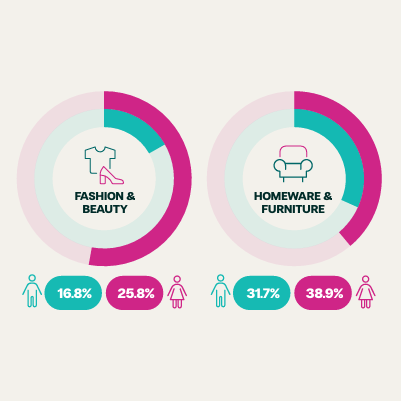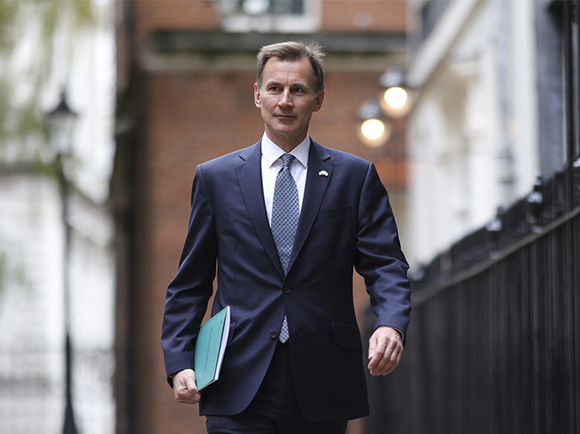Will the cost of living crisis cause a higher rate of defaults? Perhaps not…

Responsible lenders do not grant credit to vulnerable consumers. Yet still the Buy Now, Pay Later (BNPL) market has gained notoriety for its free-and-easy approach to lending. With a cost-of-living crisis on the horizon, this practice is coming under increasing media scrutiny.
Make no mistake, the upcoming cost of living squeeze and recession will be bad news for consumers. The effects will be particularly acute for vulnerable consumers, who have seen their real wages slashed by the highest rate in two decades.
It’s fair to assume that those struggling before the cost-of-living crisis will be in an even more precarious situation by the end of this year. Those consumers will experience a reduction in purchasing power and some potentially difficult financial decisions in the coming months.
We are therefore likely to see a change in defaults across many types of loans, and this might include BNPL. UK debt charity Stepchange has reported that over half of consumers using BNPL are finding it hard to keep up with repayments, while research from Citizens Advice reveals that half of 18–34 year olds are borrowing money to pay off BNPL debt.
This seems to spell bad news for the retail finance sector. According to Fraugster, $19.2 million is recorded as bad debt for every $1 billion of Buy Now, Pay Later transactions, compared to $270k for credit cards.
But these figures will not necessarily increase further, as some have predicted. The BNPL industry is known publicly as a low-ticket credit solution for low-income consumers. But the term ‘BNPL’ more broadly encompasses a range of short-term interest-free credit providers, many of whom have stringent credit checks in place to prevent lending to vulnerable customers.
These providers are typically Tier One financial organisations who are stricter on policing their ethical responsibilities and maintain a Duty of Care to consumers. These lenders are less likely to experience a wave of new defaults.
In fact, the turbulent market conditions may turn more consumers towards this end of the sector, which will be good news for both parties. Our own data suggests that, although applications have remained relatively flat since the start of the year, activation rates are rising for approved retail finance agreements. This suggests the appetite for both lending and borrowing is still there, and lenders are making an effort to make the practice less risky for both parties.
Consumer values have changed since the start of the pandemic
Ernst & Young’s (EY) latest Future Consumer Index (FCI) report, a study measuring consumer sentiment of 16,000 consumers across 20 countries, suggests prolonged market volatility and uncertainty has fundamentally changed consumer values. Consumers have adopted an ‘always on’ mindset to cope with the ever-changing economic climate.
The report suggests consumers are trying to move away from their pandemic spending habits and take more control of their lives, making purchases borne out of aspiration rather than necessity. New values, picked up during the pandemic, are persisting despite mounting financial pressure from the rising cost of living.
Most notably, consumers are said to be unwilling to give up their lifestyles despite a squeeze on their disposable income. Savings are therefore being made in one area – a shift from branded to private label goods, for example – so more thoughtful spending may take place in another.
In other words, consumers are making fewer, more considered purchases. 66% of all consumers say they are now focussed on value for money whilst 33% of UK consumers are very or extremely concerned about not having enough money to spend on non-essential items.
How does Buy Now, Pay Later fit with changing consumer behaviour?
This begins to explain why activation rates are increasing.
Consumers now are more likely to spend time considering which goods will bring value to their lives and prioritise spending on things they actually need. At the same time, they’re making room in their budgets for the items that are non-essential but important to their lifestyles.
Retail finance, after all, is a cost effective alternative to traditional forms of credit. An enhanced focus on affordability could be ushering those who wish (or need) to finance their purchases to access credit towards retail finance products as an efficient, 0% interest alternative to traditional interest-bearing loans.
If this is the case, it would suggest that the financially savvy are turning to retail finance as a financial management tool. Research from PYMENTS indicates that BNPL users earning over $100,000 are increasing their usage. This income group is also the most likely to show interest in using a bank-backed BNPL solution.
Therefore, an uptick in volume, especially at the higher end of the retail price spectrum, is a more likely outcome than a wave of defaults at the lower end.
The macroeconomic picture
This is not to say the sector will be immune to macroeconomic tailwinds.
The UK has a difficult winter ahead as the energy price cap will be lifted in October. Those who have recently committed to loans on high-cost items will now need to wait and see how their finances cope during the upcoming cost of living crisis and recession.
We have heard that some lenders are increasing recruitment in their collections teams, ostensibly in anticipation of a wave of defaults across the board by early 2023.
Whether these collectors will be trained on the lower end of the market is unknown. Debt collection is straightforward when it comes to substantial assets like cars, houses or white goods. But the same procedure for a £50 pair of trainers, or indeed perishable items like food, fuel, or alcohol, is likely to cost more than the amount owed, making debt collection a fruitless endeavour.
Still, debt collection needs to exist in order to dissuade customers from defaulting on loans. The question therefore becomes, will lenders accept localised financial losses in exchange for a broader deterrent?
Furthermore, will customers continue to honour loans taken out before their budgets became constricted, or would they rather absorb the potential penalties? At a time when hundreds of thousands of people in the UK are gearing up for an energy bill strike, will retail finance loans also come into the crosshairs?
The bottom line
Real pay is dropping, inflation is rising, and disposable income is dwindling. The cost of living crisis is pushing millions into financial hardship. A rise in default rates is understandably likely, particularly when it comes to low-ticket BNPL loans.
But there is good news. Consumers have undoubtedly become more financially resilient since the beginning of the pandemic and will put more thought into where they spend their money during the cost of living crisis. This is evidenced by a higher activation rate on the Divido platform and data from the EY FCI consumer report.
The retail finance industry will see an uptick in usage and will continue to grow. Defaults are a natural consequence of this rise. The big question will be whether the percentage rate of defaults grows in line with activations, or whether it will increase or decline against it. The coming months are difficult to predict, but we remain optimistic that – whatever happens – default rates will not grow to unmanageable levels.
A sustainable Buy Now, Pay Later strategy starts with building trust at the checkout. Download our new whitepaper for research-backed tips to help you communicate your proposition.
Keen to know more?








